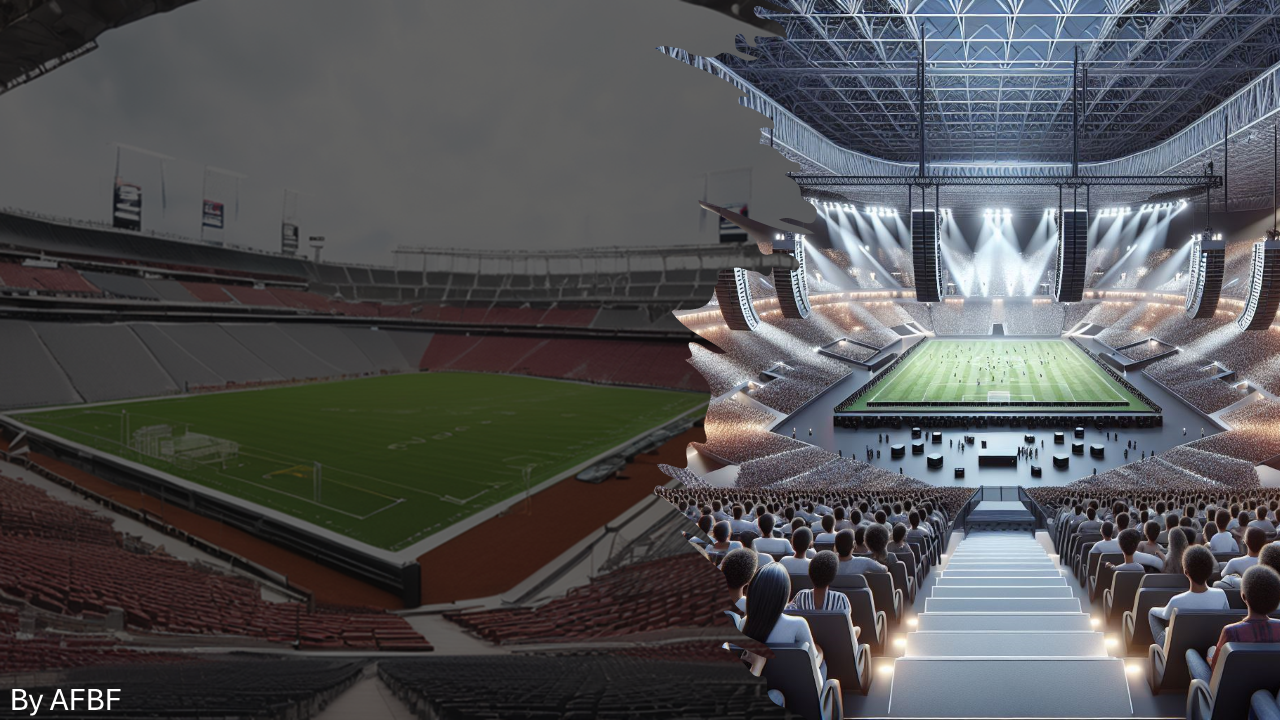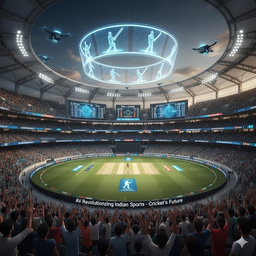Challenges and Innovations in Stadium Audio Design: Going Beyond Loudness

Based on my direct and indirect involvement in 5 of the 8 stadiums that hosted the FIFA 2022 World Cup in Qatar, I can confidently say that designing audio systems for stadiums and large venues is a complex undertaking that goes far beyond just making sound loud.
While sharp and clear volume might have been the primary concern in older designs, today’s stadiums demand a far more sophisticated approach. Modern systems must deliver clear, intelligible and immersive sound across vast spaces filled with tens of thousands of spectators, each located at different distances from the source.
I will outline some of the key challenges in stadium audio design and highlight the innovations that allow AV professionals to achieve exceptional results. From the evolution of line array systems to the adoption of spatial audio and advanced acoustics, I will share strategies and technologies that help overcome these design obstacles.
A- Some Unique Challenges of Stadium Audio Design.
- Audio Coverage Across Large Spaces:
Stadiums are vast environments with seating spread across different levels, angles and distances. The audio must reach every listener evenly, ensuring that someone seated in the front row hears the same clarity and detail as someone in the farthest seat. Achieving uniform coverage across such diverse spaces requires precise planning and implementation.
- Maintaining Speech Intelligibility:
In stadiums, clear speech is critical for announcements, commentary and especially for safety information. Poor intelligibility occurs when the sound becomes distorted or when excessive reverberation causes overlapping echoes, rendering the speech unclear. Speech intelligibility is a measure of success for any stadium audio design.
- Managing Reverberation and Reflections:
Stadiums are often constructed with hard materials like plastic chair, concrete and steel, which create long reverberation times. Sound waves reflect off these surfaces and collide, creating echoes that significantly diminish audio clarity. Managing these reflections requires a combination of precise speaker placement and acoustic treatments.
- Audience Noise and Ambient Sound:
The sheer energy of a packed stadium—cheering crowds, music and other ambient sounds—can drown out the intended audio. The audio system must be powerful enough to cut through the noise while still sounding natural and clear. This challenge is amplified during peak crowd moments, such as goals or special performances.
- Weather and Environmental Conditions:
One of the most overlooked challenges in designing large-scale stadiums is weather and environmental conditions. Weather was not always taken into consideration during stadium audio design. In open-air stadiums, factors like wind, humidity and temperature variations can distort sound waves, making it difficult to maintain consistent audio quality throughout the venue.
For example:
- Wind can carry sound waves away from targeted zones.
- Humidity and temperature ( especially high temperatures) affect the speed and propagation of sound, which alters how audio is experienced in different sections of the stadium.
- These environmental factors require systems that are adaptable, often incorporating weather-resistant equipment and real-time EQ adjustments to compensate for environmental changes.
B- Innovations and Solutions: Overcoming the Challenges.
- Line Array Technology for Optimized Coverage:
Line array systems have revolutionized stadium audio design by delivering consistent sound pressure levels (SPL) over long distances and clear speech intelligibility .
-How Line Arrays Work:
Unlike traditional point-source speakers that emit sound in all directions, line arrays consist of vertically stacked speaker elements with different attaching mechanisms depending on the manufacturer. This design creates a focused vertical dispersion while maintaining wide horizontal coverage. By precisely angling each speaker element, sound engineers can modify the sound output to cover every section of the stadium, leading to even coverage with minimal drop-off in volume from front to back and reduced reflections. Line arrays can be adjusted to suit stadiums of any size.
-Example Case:
One of large-scale project at a 50k seat arena, Sound engineers used a line array system to achieve uniform coverage. Each zone of the stadium was mapped using simulation software, which included approximate absorption coefficients of materials like plastic chairs, cement walls and other construction elements. The result was a consistent, crystal-clear audio experience for all attendees, regardless of their seat location.
- Leveraging Spatial Audio for Immersion
Spatial audio technology brings a new level of realism and immersion to stadium sound systems. By leveraging multi-channel audio processing, spatial audio allows sound engineers to create the perception of directional and 3D audio, where sounds appear to come from specific locations.
Applications in Stadiums:
- Player Introductions and Events: Sounds like roaring engines or player announcements can move across the stadium, creating a dynamic experience.
- Crowd Immersion: Spatial audio can replicate the direction and movement of live crowd sounds for a more natural, immersive environment.
Systems like Dante-enabled processors (among other professional manufacturers) and advanced digital signal processing (DSP) platforms make it easier to distribute and control multi-channel audio across large venues. These systems synchronize audio perfectly to ensure seamless experiences.
- Advanced Acoustic Design
Acoustic modeling plays a critical role in reducing unwanted reflections and ensuring clear sound in stadiums. Using advanced software tools, AV designers can predict how sound waves will behave in a given space and address potential issues.
Some Acoustic Solutions Include:
- Directional Speakers: Positioning line array speakers to focus sound toward the audience rather than reflective surfaces.
- Acoustic Treatments: Adding absorptive materials, diffusers, or panels to reduce reverberation.
- Simulation Software: Tools like EASE (Enhanced Acoustic Simulator for Engineers) help simulate audio behavior before installation, allowing for precise planning.
Example Case: At a multipurpose hall complex stadium, acoustic engineers modeled the entire venue using EASE software. The simulation results were submitted to the client and project consultant for validation and third-party review & inspection. Hard reflective surfaces were identified and mitigated with targeted acoustic treatments, resulting in minimal reverberation and improved speech clarity.
- Addressing Environmental Factors:
For outdoor stadiums, weatherproof systems and advanced speaker technology are essential to combat environmental challenges.
-Key Innovations:
- Weather-Resistant Line Arrays: Modern line arrays are designed to withstand harsh weather conditions while maintaining performance.
- Auto-EQ Systems: Environmental sensing systems can adjust equalization (EQ) in real time to compensate for temperature, humidity and wind.
-Tip: When designing for outdoor venues, AV professionals must work closely with sound specialist manufacturers to select rugged, IP-rated speakers and components.
C - Practical Tips for Successful Stadium Audio Design
- Measure dimensions, seating layouts and materials before planning the system ; Conducting a site survey is always recommended specially for sound engineers.
- Predict audio behavior and optimize speaker placement before installation by using simulation Software.
- Break the stadium into audio zones for precise sound coverage and control.
- Sound Systems with real-time monitoring can identify and resolve audio issues quickly.
- Partnering with acoustics specialists ensures sound clarity in challenging spaces.
Stadium audio design has evolved far beyond simply delivering loud sound. Modern systems must balance power, clarity and immersion while overcoming challenges like reflections, environmental factors and audience noise. Innovations in line array technology, spatial audio and acoustic design have paved the way for high-performance systems that deliver exceptional audio experiences to every listener, regardless of their seat.
By leveraging advanced tools, simulation software and cutting-edge technologies, AV professionals can create stadium soundscapes that engage audiences, ensure safety and leave lasting impressions. Whether it’s a live concert, sports event, or public announcement, audio systems in stadiums today should be smarter, clearer and more immersive than ever before.
Finally, for AV designers and integrators, the key lies in careful planning, collaboration and the use of modern technologies to deliver audio solutions that meet the ever growing expectations of stadium audiences.
-
Xchange Advocates are recognized AV/IT industry thought leaders and influencers. We invite you to connect with them and follow their activity across the community as they offer valuable insights and expertise while advocating for and building awareness of the AV industry.
Recommended Content
AV for Sports Industry in India with Cricket Prospective






Please sign in or register for FREE
If you are a registered user on AVIXA Xchange, please sign in
Excellent article sir
Thank you, @Rob Robitaille!
Indeed, there’s much more to explore when it comes to stadium audio design. The challenges and solutions I’ve shared here are just a glimpse of what goes into creating exceptional audio experiences in such complex environments. Months and even years of overcoming obstacles and refining strategies cannot be fully captured in a single article.
I’m glad to share some of my experiences with the AV community, especially on AVIXA Xchange.